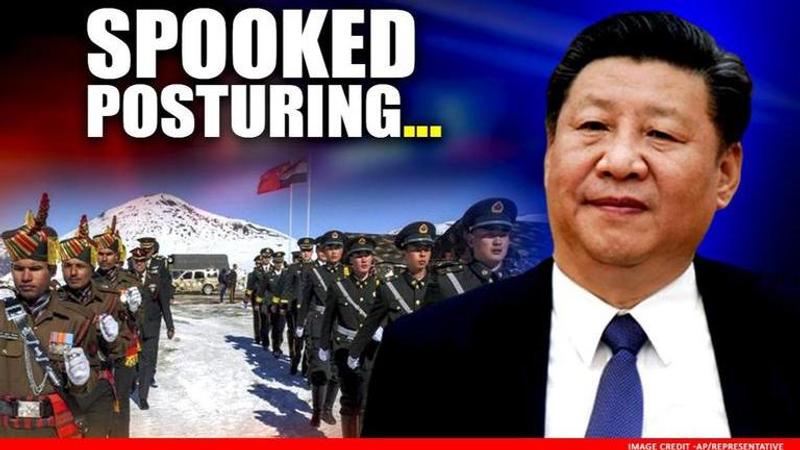Published 11:25 IST, June 22nd 2020
Changed rules of engagement at LAC spook China; mouthpiece & stooge posture aggressively
Reacting to the Army being given free hand, Chinese mouthpiece Global Times' editor has threatened saying "India will pay a heavy price for any such action"

India has given complete authority to the Indian Armed Forces to act and react as deemed fit according to the situation on the ground which means that the armed forces will no longer be bound by restrictions on the use of firearms and will have full authority to respond as deemed fit for the prevailing situation if China turns hostile. Defence Minister Rajnath Singh on Sunday said that India although being a peaceful nation is compelled to change the rules of engagement after the Galwan valley violent standoff leading to the martyrdom of 20 Indian Army soldiers, as per sources.
Spooked by the reports, Chinese mouthpiece Global Times editor Hu Xijin has threatened saying "India will pay a heavy price for any such action".
The same journalist has been issuing a lot of information that his charge - the Global Times - doesn't seem to want to state officially and the Chinese government even less so, such as the reason for China not revealing the number of casualties it suffered in the LAC clash.
However, in this case, Global Times has also issued an op-ed engaging in aggressive posturing against India.
Chinese mouthpiece spews venom against India
The state-backed mouthpiece citing Chinese analysts has said, "India will be more humiliated than after the 1962 border conflict with China if it cannot control anti-China sentiment at home and has a new military conflict with its biggest neighbour." This comes at a time that China's standing globally is at its nadir, with the Covid outbreak serving as a watershed moment leading to countries calling out years of Chinese aggression. While the US has moved three aircraft carriers towards China, Japan has deployed missile systems on its border facing China.
Even as Prime Minister Narendra Modi has said that India wants peace but will not stay quiet if provoked, the Chinese mouthpiece had said quoting a Chinese military expert, "Modi is playing with words in order to avoid an escalation as he does not want to really unleash his army by encouraging them to actively start another clash."
The Chinese mouthpiece went on to mention a report by Indian 'economist' Swaminathan Aiyar in an Indian media outlet, "that the gap between China and India militarily and economically is five times bigger than it was in 1962. Attempting military adventures in that area is asking to be thrashed again and humiliated on a scale five times bigger than in 1962." While China's economy is bigger than India's, that is no indication of the two countries' military might as both have heavy deployment in the region and while India's armed forces have decades of experience of actual combat owing to the belligerence of China's stooge Pakistan, the Chinese forces have largely been limited to subjugating Tibetans and partaking in military parades.
Rules of engagement changed
The Central government has made amendments to the rules of engagement after the Galwan valley faceoff given a free hand to the Indian Armed Forces to react as they deem fit for the situation that might also include the use of arms and ammunition, as per sources. Indian soldiers carried arms during the Galwan valley faceoff but did not use them as they were bound by the border agreements between the two countries to not use guns and bullets.
The border agreements of 1996 and 2005 between India and China did not allow the soldiers from two sides to open fire or use explosives within the two-kilometre of the LAC. However, the Chinese People's Liberation Army were equipped with iron rods and spikes clad clubs against the Indian army.
Updated 11:25 IST, June 22nd 2020




